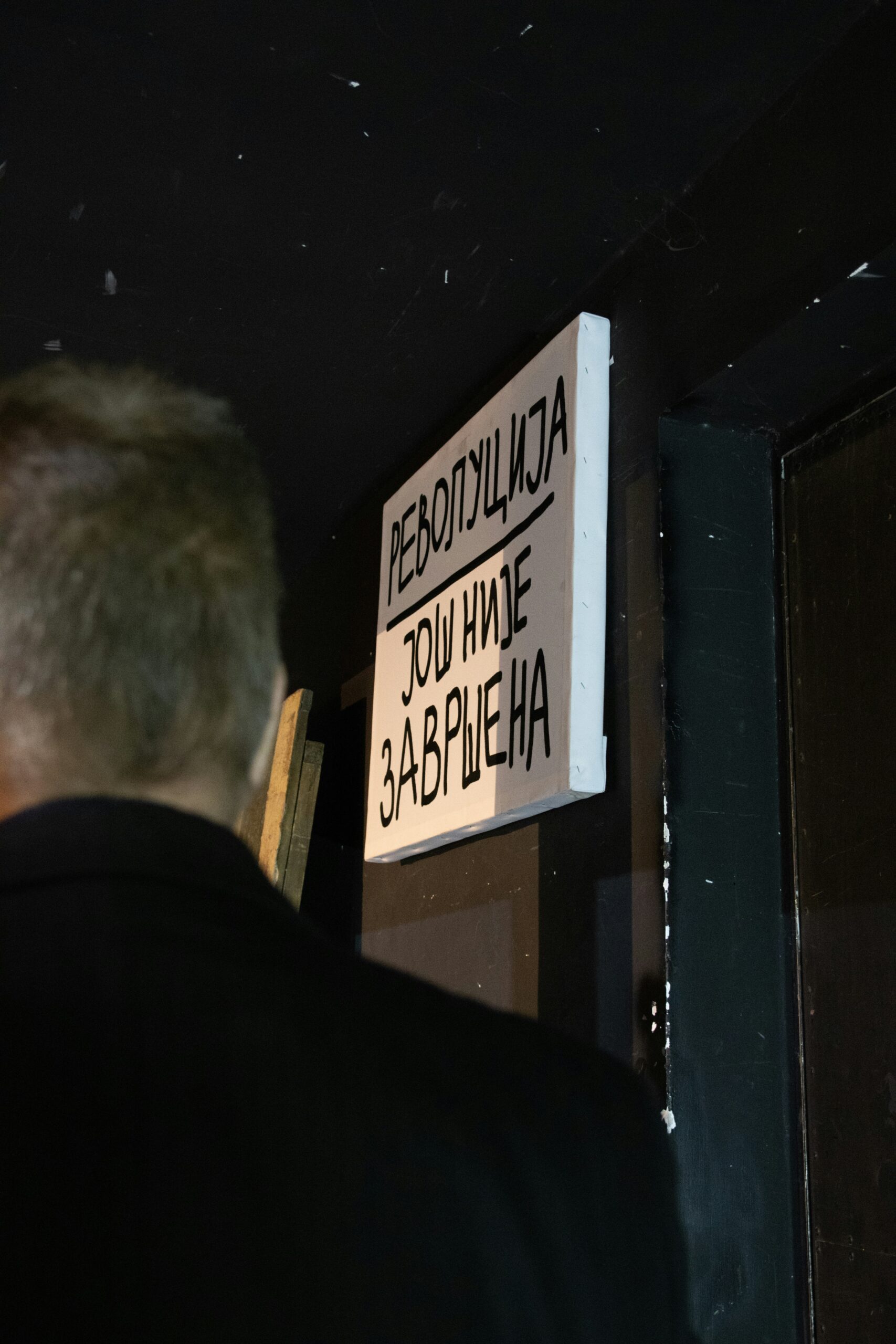Introduction to Leeds Violence
In recent times, the city of Leeds has witnessed a disturbing surge in violence, marked by a series of high-profile incidents that have captured the public’s attention. The severity and frequency of these events have raised alarm among residents and authorities alike. Reports indicate that the nature of the violence varies widely, encompassing street altercations, racially motivated attacks, and gang-related activities.
These violent occurrences are not isolated incidents but part of a troubling trend that has been escalating over the past few months. The increase in these events has led to a growing sense of unease within the community, with many fearing for their safety and the safety of their loved ones. The local law enforcement agencies have been working tirelessly to address the situation, but the complexity of the issue poses significant challenges.
Amidst these troubling developments, racial tension has been identified as a significant factor contributing to the rise in violence. Misconceptions and prejudices have fueled animosity between different racial groups, leading to confrontations and, in some cases, severe physical assaults. The impact of these incidents extends beyond the immediate victims, affecting the broader community by fostering an atmosphere of mistrust and fear.
The authorities in Leeds are acutely aware of the gravity of the situation and have been implementing various measures aimed at curbing the violence and restoring peace. These efforts include increased police presence in affected areas, community outreach programs, and initiatives aimed at promoting dialogue and understanding between different racial groups.
Despite these efforts, the path to resolving these issues is fraught with challenges. The complexity of racial dynamics, coupled with deeply ingrained societal misconceptions, necessitates a multifaceted approach that goes beyond immediate law enforcement responses. The situation in Leeds underscores the urgent need for long-term strategies that address the root causes of violence and foster a more inclusive and harmonious community.
Historical Context of Racial Tension in Leeds
Leeds, a vibrant city in West Yorkshire, has a rich and complex history that has significantly shaped its present-day racial dynamics. The city’s demographic landscape has evolved dramatically over the years, influenced by waves of immigration and socio-economic transformations. Understanding the historical context of racial tension in Leeds requires a deep dive into these pivotal moments and their aftermath.
The industrial revolution marked the beginning of significant demographic changes in Leeds, attracting a diverse workforce from different parts of the UK and beyond. This period saw an influx of Irish, Jewish, and Eastern European immigrants, who settled in working-class neighborhoods. While these communities contributed to the city’s economic growth, they also faced social isolation and discrimination, laying the groundwork for future racial tensions.
Post-World War II, Leeds experienced another major demographic shift with the arrival of migrants from the Commonwealth countries, particularly from the Caribbean, South Asia, and Africa. These immigrants filled labor shortages and revitalized various sectors of the economy. However, their presence also highlighted systemic issues such as housing discrimination, employment inequalities, and inadequate social services, which exacerbated racial tensions.
The late 20th century witnessed several significant racial conflicts in Leeds. Notable among these were the Chapeltown riots of 1975 and 1981, which were responses to police brutality, racial profiling, and socio-economic deprivation. These events underscored the deep-seated racial issues and mistrust between minority communities and law enforcement agencies.
In recent years, the city’s racial dynamics have been influenced by global events such as the War on Terror and Brexit, which have fueled xenophobic sentiments and misconceptions about immigrant communities. Systemic racism remains a pervasive issue, manifesting in various forms, including disparities in education, employment, and criminal justice.
Understanding the historical context of racial tension in Leeds is crucial for addressing these challenges. By acknowledging past injustices and their lasting impacts, policymakers and community leaders can work towards creating a more inclusive and equitable society.
Recent Incidents and Their Racial Twist
In recent months, Leeds has witnessed a series of violent incidents that have been heavily scrutinized through the lens of racial tension. One notable incident involved an altercation outside a local pub, where two individuals, one of Asian descent and the other Caucasian, engaged in a physical fight. Media coverage quickly highlighted the racial backgrounds of the individuals involved, framing the confrontation as racially motivated. This portrayal was further amplified by social media, where users speculated about underlying racial animosities without substantive evidence.
Another incident that garnered significant attention involved a group of teenagers in a local park. Reports suggested that the altercation was racially charged, with claims of racial slurs being exchanged. However, police investigations later revealed that the primary cause of the dispute was unrelated to race; it was instead a personal conflict that escalated. Despite this, the initial media narrative had already cemented the incident in the public’s mind as racially driven, illustrating how initial interpretations can shape lasting perceptions.
These incidents underscore how the media and public discourse can sometimes prematurely attribute racial motives to acts of violence. While it is crucial to address genuine instances of racial tension and violence, it is equally important to avoid exaggerating or misinterpreting events. Overemphasis on racial factors without clear evidence can exacerbate existing tensions, perpetuating a cycle of misunderstanding and mistrust among different communities in Leeds.
In analyzing these incidents, it is evident that while some acts of violence may indeed have racial undertones, others are often misrepresented. A balanced approach in reporting and public discussion is essential to ensure that the focus remains on factual information rather than sensationalist interpretations. This balanced perspective can help foster a more accurate understanding of the root causes of violence and promote a more cohesive and tolerant societal fabric in Leeds.
Media’s Role in Shaping Perception
The media wields significant power in shaping public perception, particularly regarding incidents of violence in Leeds. Different media outlets approach the same events with varying narratives, often determined by their editorial stance and target audience. The language used in reporting these incidents can either exacerbate or alleviate racial tensions. For instance, terms like “race-related violence” or “community unrest” carry different connotations and can influence how the public understands the root causes and contributing factors of the violence.
Potential biases in media coverage are also a critical factor. Some outlets may focus predominantly on the racial elements, potentially framing the violence as a direct consequence of ethnic differences. Others might emphasize socioeconomic issues, thereby providing a broader context that includes but is not limited to racial tension. These differing narratives can lead to polarized public opinions, making it challenging to form a unified community response to the violence.
Sensationalism further complicates the issue. The media’s tendency to highlight the most dramatic aspects of incidents can overshadow more nuanced and constructive discussions. Eye-catching headlines and graphic imagery may attract more viewers or readers, but they can also contribute to heightened fear and mistrust among community members. This sensationalist approach often sacrifices depth for immediacy, promoting a superficial understanding of the complex interplay between race, violence, and community relations in Leeds.
Misinformation, whether intentional or accidental, exacerbates these problems. Incorrect or incomplete reporting can spread rapidly, particularly on social media platforms, where the line between verified news and personal opinion often blurs. This misinformation can lead to misguided actions and policies that fail to address the underlying issues, further straining community relations.
In order to mitigate the negative impact of media coverage on racial tension and violence in Leeds, it is crucial for media outlets to commit to responsible journalism. Accurate, balanced reporting that avoids sensationalism and considers multiple perspectives can foster a more informed and cohesive community response, ultimately contributing to long-term solutions.
Community Reactions and Divisions
The recent violence in Leeds has elicited a wide spectrum of reactions from different community groups, mirroring the deep-seated complexities of racial tensions. The responses have varied significantly across ethnic and racial lines, highlighting both divisions and moments of solidarity within the city. These reactions are not merely isolated instances but are reflective of broader societal issues that go beyond the immediate incidents of violence.
Among the various communities in Leeds, there has been a palpable sense of fear and frustration. Many residents from minority ethnic backgrounds feel that the violence and its racial framing have exacerbated existing prejudices and misconceptions. This has led to heightened anxiety and mistrust, particularly among younger individuals who often bear the brunt of racial profiling and discrimination. Community leaders have reported an increase in both verbal and physical confrontations, further deepening the chasm between different racial groups.
Conversely, there have also been significant displays of unity and support. Various community organizations have come together to condemn the violence and advocate for peaceful resolutions. These groups have organized rallies, forums, and discussions to foster understanding and solidarity among the diverse populations in Leeds. Such initiatives aim to break down the stereotypes and misconceptions that fuel racial tensions, promoting a more cohesive and inclusive community environment.
The duality of reactions—division and solidarity—speaks volumes about the broader societal issues at play. The violence in Leeds has acted as a magnifying glass, bringing to the forefront the persistent racial tensions that exist within the community. It has underscored the need for comprehensive strategies to address these issues, including educational programs, policy reforms, and community engagement initiatives. The path to healing and reconciliation is long and fraught with challenges, but the collective efforts of Leeds’ diverse communities offer a glimmer of hope for a more harmonious future.
Government and Law Enforcement Response
In response to the escalating racial tensions and violence in Leeds, the local government and law enforcement agencies have implemented a series of measures aimed at addressing the violence, protecting communities, and fostering dialogue among diverse groups. The primary focus has been on ensuring public safety, maintaining peace, and promoting understanding through both immediate actions and long-term strategies.
Law enforcement has increased patrols in affected areas, deploying additional officers to hotspots to deter further violence and respond quickly to any incidents. This heightened presence is intended to reassure community members and prevent escalation. Additionally, local government officials have organized community meetings and forums, providing a platform for residents to voice their concerns and experiences. These forums aim to bridge the gap between different racial and ethnic groups, encouraging open dialogue and mutual understanding.
Moreover, the local government has established a task force comprising representatives from various community organizations, law enforcement, and social services. This task force is tasked with developing comprehensive strategies to address the root causes of racial tension. Initiatives include educational programs in schools to promote diversity and inclusion, workshops on conflict resolution, and support services for victims of racial violence.
However, the effectiveness of these responses has been a subject of debate. Critics argue that the increased police presence may contribute to further tension, particularly in communities with a history of strained relationships with law enforcement. There are calls for more community-based approaches that involve residents in the planning and implementation of safety measures. Additionally, some community leaders have expressed concerns about the adequacy of resources allocated to long-term initiatives, emphasizing the need for sustained investment in education and social services.
Despite these criticisms, the efforts by local government and law enforcement to address the violence and foster dialogue represent a crucial step towards healing and unity in Leeds. Continuous assessment and adaptation of these strategies will be essential in ensuring their effectiveness and in building a cohesive and safe community for all residents.
Efforts Towards Reconciliation and Healing
In response to the racial tensions and misconceptions that have impacted Leeds, various initiatives have emerged aimed at reconciliation and healing within the community. These efforts are spearheaded by community leaders, non-profits, and grassroots organizations, all dedicated to bridging divides and promoting mutual understanding among diverse populations.
Community leaders in Leeds have played a pivotal role in fostering dialogue and understanding. Through town hall meetings, public forums, and community events, they have created spaces where residents can voice their concerns, share experiences, and work collaboratively towards solutions. These forums have been instrumental in uncovering underlying issues and fostering a sense of solidarity among community members.
Non-profit organizations have also been at the forefront of the reconciliation efforts. Organizations such as Leeds Together and Unity for All have launched programs aimed at educating the public about racial biases and promoting inclusivity. Workshops, cultural exchange programs, and educational campaigns are some of the tools these organizations use to challenge misconceptions and build a more cohesive community.
Grassroots organizations have made significant contributions by addressing racial tensions from the ground up. Initiatives like neighborhood watch programs and youth mentorship projects have proven effective in building trust and cooperation among residents. These grassroots efforts are often driven by volunteers who have a personal stake in the community’s well-being, making their impact both profound and enduring.
Successful examples of these reconciliation efforts include the annual Leeds Diversity Festival, which celebrates the city’s multicultural heritage through music, art, and food, fostering a spirit of unity and acceptance. Additionally, the Leeds Community Mediation Program has effectively resolved conflicts by facilitating open and respectful dialogue between parties.
Despite these positive strides, ongoing challenges remain. Financial constraints, deeply ingrained prejudices, and occasional resistance to change are significant hurdles that these initiatives must continuously navigate. Nevertheless, the collective efforts of community leaders, non-profits, and grassroots organizations offer a promising path toward a more inclusive and harmonious Leeds.
Looking Forward: Building a More Inclusive Leeds
As we reflect on the current challenges that Leeds faces in terms of racial tension and violence, it becomes clear that a multifaceted approach is essential for fostering an inclusive and peaceful community. The future of Leeds hinges on our collective efforts to address these deep-seated issues through comprehensive strategies that emphasize education, dialogue, and systemic change.
First and foremost, education plays a pivotal role in dismantling racial misconceptions and promoting understanding among diverse groups. Implementing inclusive curricula that highlight the contributions and histories of various ethnic communities can help foster empathy and respect from an early age. Schools and educational institutions need to be proactive in creating environments where diversity is celebrated, and where students are encouraged to engage in open dialogues about race and inclusion.
Community-driven efforts are equally crucial in bridging divides and building trust. Local organizations, religious institutions, and community leaders must collaborate to create platforms for dialogue and understanding. Community events, workshops, and cultural exchange programs can serve as valuable opportunities for individuals from different backgrounds to come together, share their experiences, and work towards common goals. By fostering a culture of open communication, Leeds can create a more cohesive and supportive community.
Policy changes at the governmental level are also necessary to address systemic issues that contribute to racial tension. This includes reforms in policing practices, ensuring fair representation of minority groups in decision-making processes, and implementing policies that promote economic equality and access to opportunities for all residents. Government actions must be transparent and inclusive, involving input from diverse community voices to ensure policies are effective and equitable.
Ultimately, building a more inclusive Leeds requires a sustained commitment from all sectors of society. By prioritizing education, fostering community dialogue, and enacting meaningful policy changes, Leeds can move towards a future where racial harmony and community safety are not just aspirations but realities. It is through these concerted efforts that Leeds can become a beacon of inclusivity, setting an example for other cities to follow.


